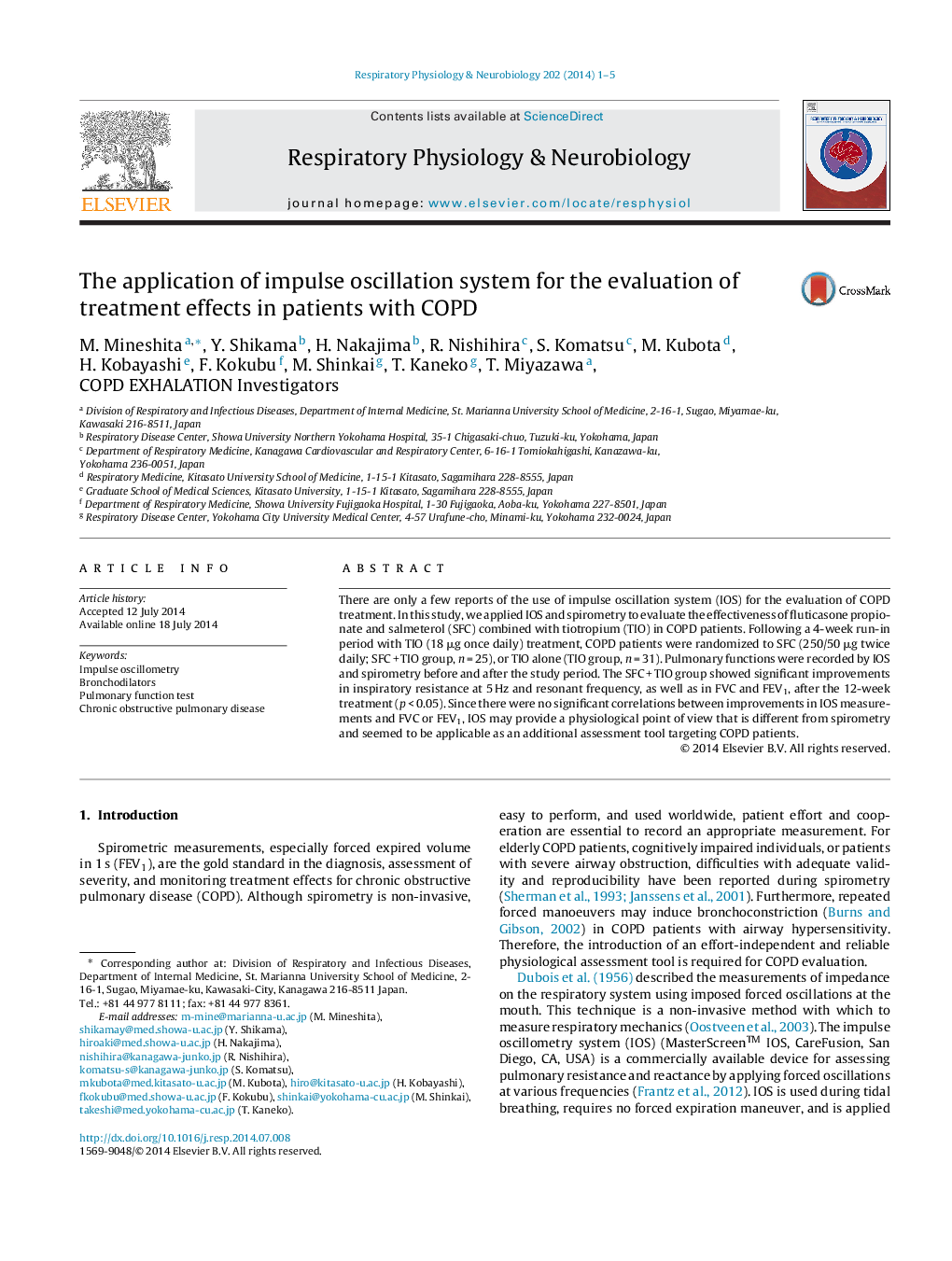| Article ID | Journal | Published Year | Pages | File Type |
|---|---|---|---|---|
| 2846903 | Respiratory Physiology & Neurobiology | 2014 | 5 Pages |
•We applied IOS for evaluating the effectiveness of treatment in COPD patients.•Significant improvements in IOS and spirometric measurements were observed.•There were no significant correlations between improvements in IOS and spirometric measurements.•IOS may provide a physiological point of view that is different from spirometry.•IOS seemed to be applicable as an additional assessment tool targeting COPD patients.
There are only a few reports of the use of impulse oscillation system (IOS) for the evaluation of COPD treatment. In this study, we applied IOS and spirometry to evaluate the effectiveness of fluticasone propionate and salmeterol (SFC) combined with tiotropium (TIO) in COPD patients. Following a 4-week run-in period with TIO (18 μg once daily) treatment, COPD patients were randomized to SFC (250/50 μg twice daily; SFC + TIO group, n = 25), or TIO alone (TIO group, n = 31). Pulmonary functions were recorded by IOS and spirometry before and after the study period. The SFC + TIO group showed significant improvements in inspiratory resistance at 5 Hz and resonant frequency, as well as in FVC and FEV1, after the 12-week treatment (p < 0.05). Since there were no significant correlations between improvements in IOS measurements and FVC or FEV1, IOS may provide a physiological point of view that is different from spirometry and seemed to be applicable as an additional assessment tool targeting COPD patients.
